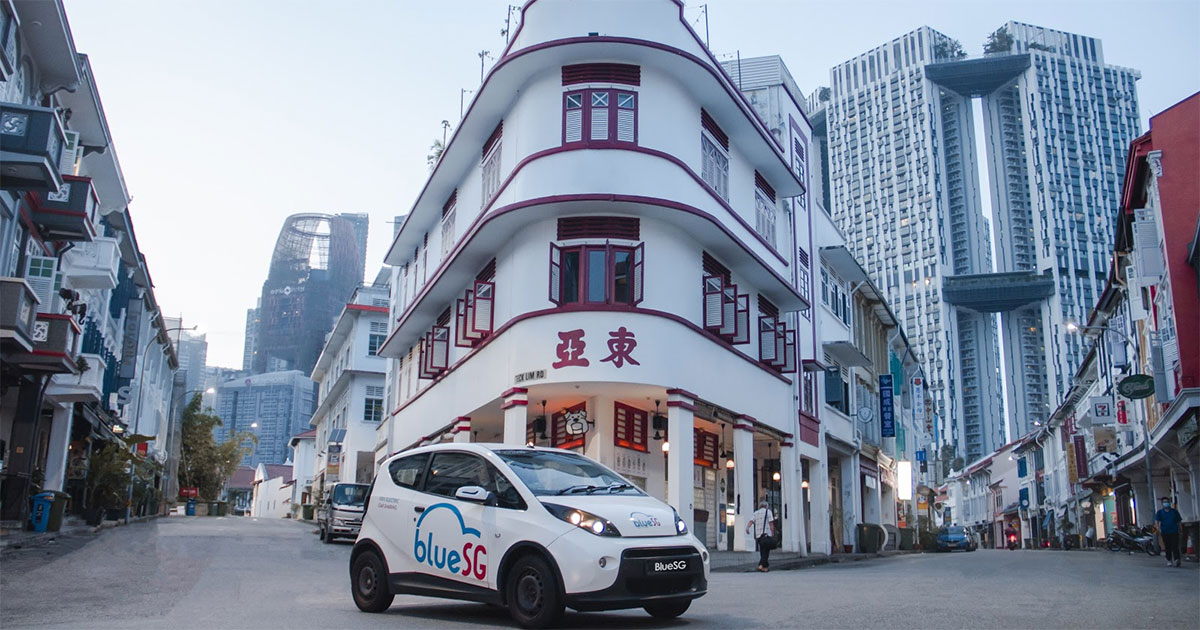In less than four years, BlueSG, an electric car-sharing entrant, has expanded to more than 660 Bluecars and over 1,500 charging points across more than 380 stations in Singapore.
Given its growing popularity, I tried driving the zippy Bluecars for a week to find out how convenient it can be, how much I would spend, and how comfortable it is to share a vehicle with the rest of the public.
And this was what happened.
1. Are Bluecars easy to drive?
First impressions: There is a bit of getting used to when first driving the Bluecar.
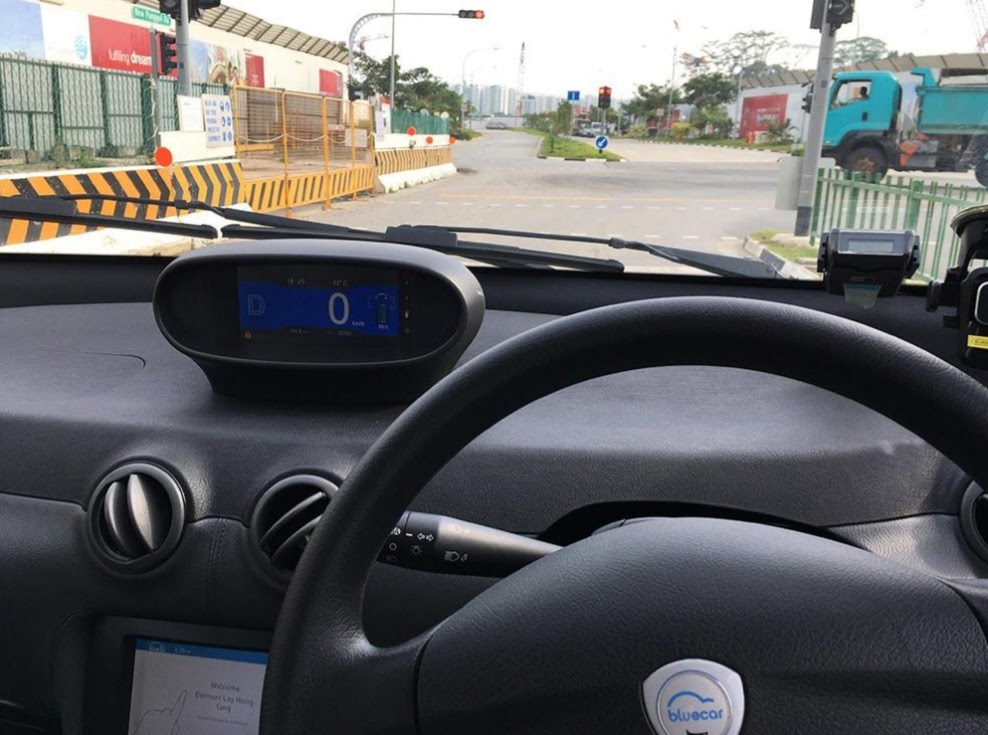
The seats are elevated and the driver feels perched higher than the average car on the road.
However, this design occasionally provides an unobstructed view of the road ahead and the other vehicles on the side, which is not a bad thing.
To ensure the air-conditioner is turned on each time I drive, I just have to press the A/C button and the A/C sign will show up on the dashboard screen.
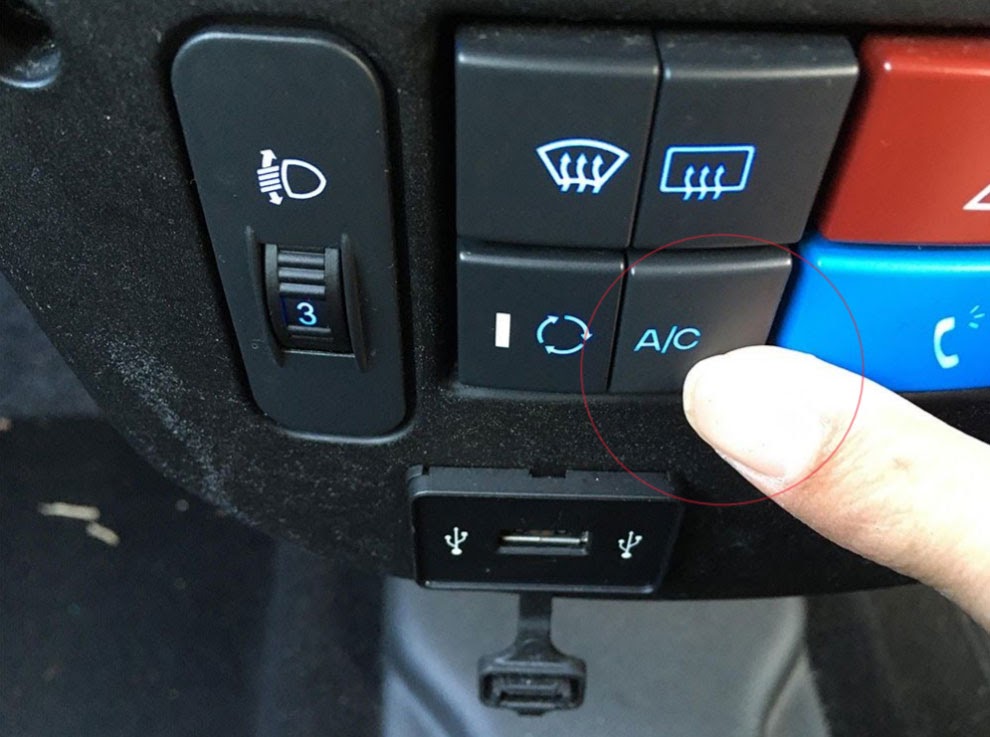
This has to be done every time when the car starts.
2. Is the Bluecar spacious?
The Bluecar interior is more spacious than it looks from the outside as a two-door hatchback.
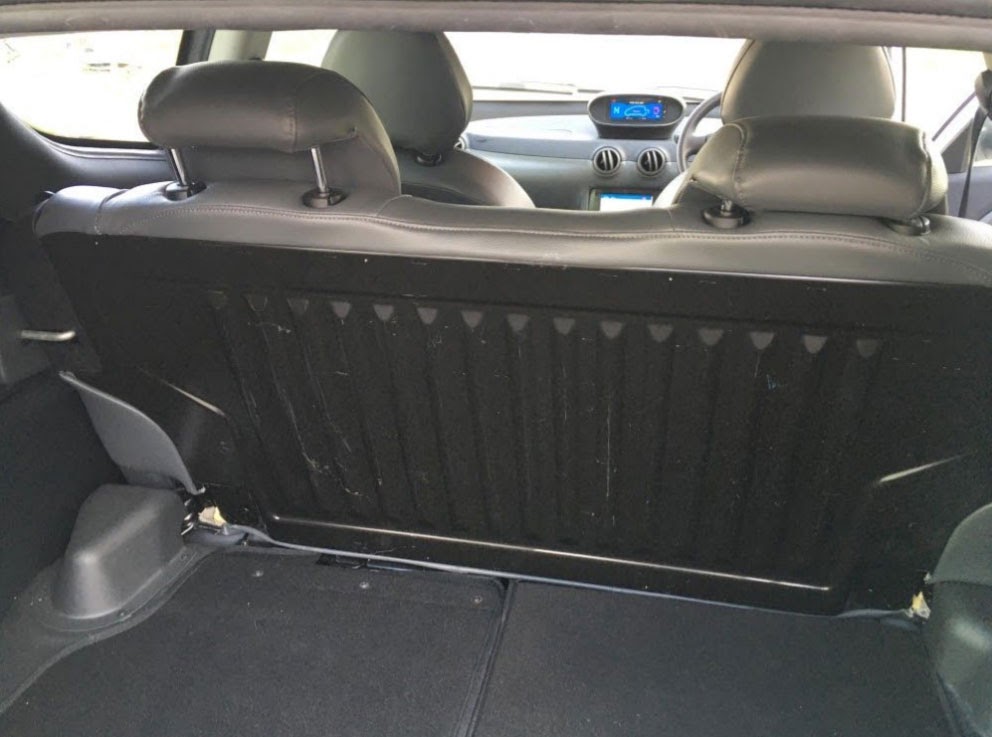
It provides enough leg and head room simply by adjusting the seats and steering wheel, which are all adjustable.
The interior seats up to four persons and the boot is spacious enough to hold groceries. If you do require more boot space, the back seat can be folded down as well.
3. What is the difference between driving a Bluecar and a regular combustion engine car?
In a Bluecar, you don’t exactly hear an engine.
As an electric vehicle, it is silent even when in motion, thus the humming sound was added in when the Bluecar reduces its speed to serve as a safety feature informing pedestrians of its presence.
But once you are used to the feel of the car, such as how it accelerates and brakes, take corners, and move up and down slopes, it is almost intuitive driving a Bluecar.
4. How much does BlueSG cost?
The short answer: It costs S$10.80 for a half-hour drive, or S$21.60 per hour.
Renting the BlueCar costs S$0.36 a minute.
As it is an electric car, there is no need to pay extra for fuel.
I took 20 minutes to drive to the office from the northeast of Singapore to Kallang and it costs S$7.20 -- thanks to the smooth-flowing traffic along the KPE after 10:30am.
In comparison, taking a private-hire vehicle or taxi would cost about S$10 to S$14 otherwise, which makes BlueSG cheaper with its pay-as-you-use model.
Once, I even managed to run an errand on a weekday by taking a round-trip to IKEA in Tampines and going back home in an hour.
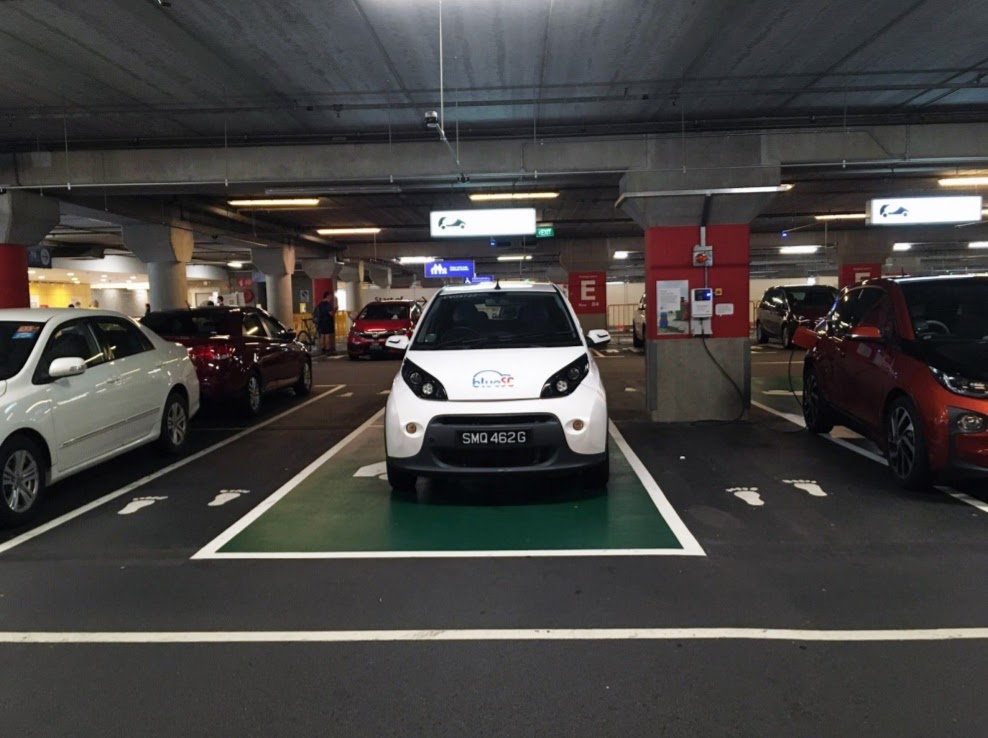
The total cost for two-way transportation to run an errand using the Bluecar? S$21.60 for one hour.
The flat rate pricing is applicable all day with no surcharges.
One perk is the ability to decide on my preferred route to get to my destination.
Because if you are on public transport or even a taxi or private-hire vehicle, you would not have this luxury of deciding which small road or short cut you want to take.
Another perk is that the service is Point to Point. This means that the Bluecar can be returned at any of the stations islandwide, which leads to shorter rental durations and a lower cost of driving.
5. Is block rental booking allowed for BlueSG?
Securing a block booking would cap the cost for those initial few hours of rental.
Besides running errands to grab groceries, I tried using BlueSG for going to dinner or heading for supper jaunts.
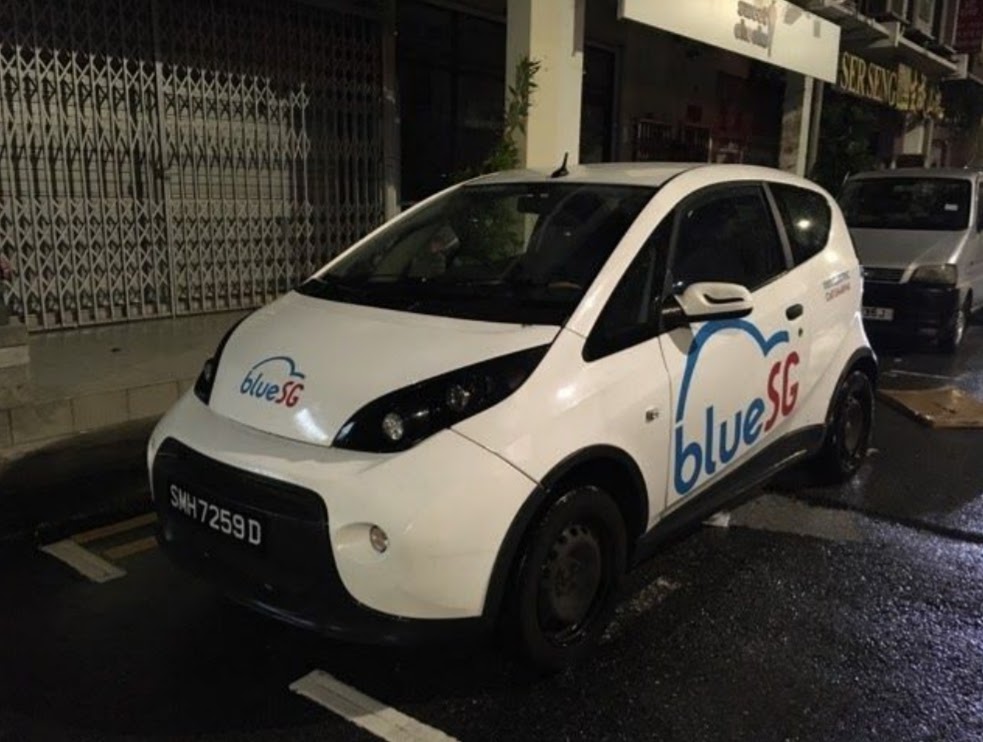
For longer trips that include travelling, eating and storing my groceries, I opted for a three-hour rental, which costs S$45.90.
There is no need to plug the Bluecar into the charging station for this duration.
I could hold on to the Bluecar for the whole three-hour period, with per-minute charges kicking in only after the block rental duration is up.
Such deals are also good for cafe-hopping in areas of Singapore that are more inconvenient to get to via public transport.
Such as Seletar Aerospace Park:
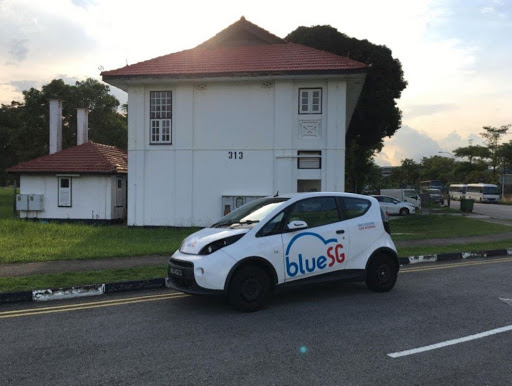
And Lorong Halus:
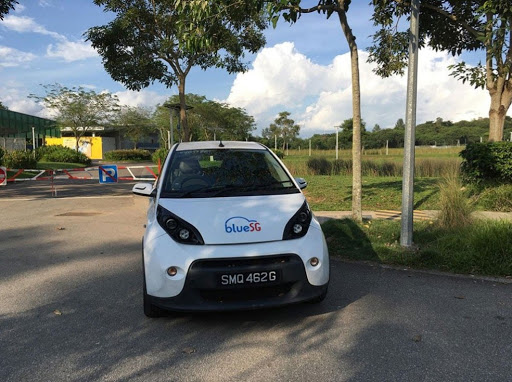
6. Are there any other hidden costs for BlueSG?
One of the perks of BlueSG is not to get a shock as you know how much you will be charged.
There are no parking charges at car parks where there are BlueSG charging stations.
This means you park for free.
As BlueSG charging stations are now established at some shopping centres, parking in Plaza Singapura, Tampines Mall, Changi Airport T2 and even Sentosa, is free.
Convenience-wise, there is also no need to insert a cashcard into the IU to pay for ERP charges, as these are automatically billed to the user.
Third-party parking charges only apply for car parks with no BlueSG stations.
Driving BlueSG is really as straightforward as renting, unplugging and driving, and subsequently returning the car to a BlueSG charging station.
There are no maintenance charges, nor are there fuel, or insurance to be paid for.
The only things to pay for are the membership plan (two plans to choose from) and the S$0.36 per minute costs.
7. Are there many Bluecars available?
When you log into the BlueSG app, you will be able to see the number of Bluecars around you.
Thankfully, I have five BlueSG charging stations near my house. The nearest being 200m away and the furthest located 900m away.
In total, there are 18 cars and parking spaces available.
Given such an arrangement, BlueSG has become a viable option to complement my public transport use.
8. How easy is it to rent a Bluecar?
There are two ways to secure a ride: I can reserve a Bluecar and use it within 30 minutes, or rent one straight away via the app as I am walking towards the BlueSG station.
All I have to do is scan the BlueSG map for available Bluecars about half an hour before setting off from home.
In the one week of using it, I managed to rent a car once down my block and twice having to walk to another nearby location.
The entire step-by-step process to rent a Bluecar can be done via the BlueSG app.
9. How easy is it to secure a BlueSG parking lot?
Out of all the times I used BlueSG, the easiest route to plan for was the one going to work.
As I am relatively familiar with the surrounding estates around the office, I know where to park based on the availability of BlueSG parking spaces as indicated on the BlueSG map.
But for areas where I am not entirely familiar with, planning and researching the route beforehand helps.
To secure a parking lot, I usually do so by reserving one just as I start driving, or when I’m nearing my destination.
Parking lots can be reserved for a maximum of 45 minutes in advance.
10. Are Bluecars hygienic?
If you are particular about hygiene, you can bring along wet wipes to clean down the common touch points inside the Bluecar, such as the steering wheel, seats, gear shift, and turn signal.
At the start of the journey, Bluecar users can rate the cleanliness of the Bluecar.
Otherwise, rest assured, BlueSG disinfects their fleet of vehicles during this pandemic, increasing the frequency of cleaning during the night.
Final verdict?
In summary, driving a Bluecar will not completely replace the need to take other forms of public transport.
However, as the BlueSG stations are conveniently located island-wide, it could easily complement the public transport system.
Also, knowing I had another transport option for that week helped make going out and heading home easier.
Cost-wise, driving a Bluecar makes economic sense given the other existing options available: Relying on taxis or private-hire vehicles, or buying a car.
Even if I drove for 90 minutes a day in total, the cost is S$32.40.
But the taste of having a set of wheels is always addictive, and the thrill and freedom driving affords cannot be replaced.
Are you new to BlueSG? Enjoy one free* month off BlueSG Basic Membership plan today.
Click here to find out more.
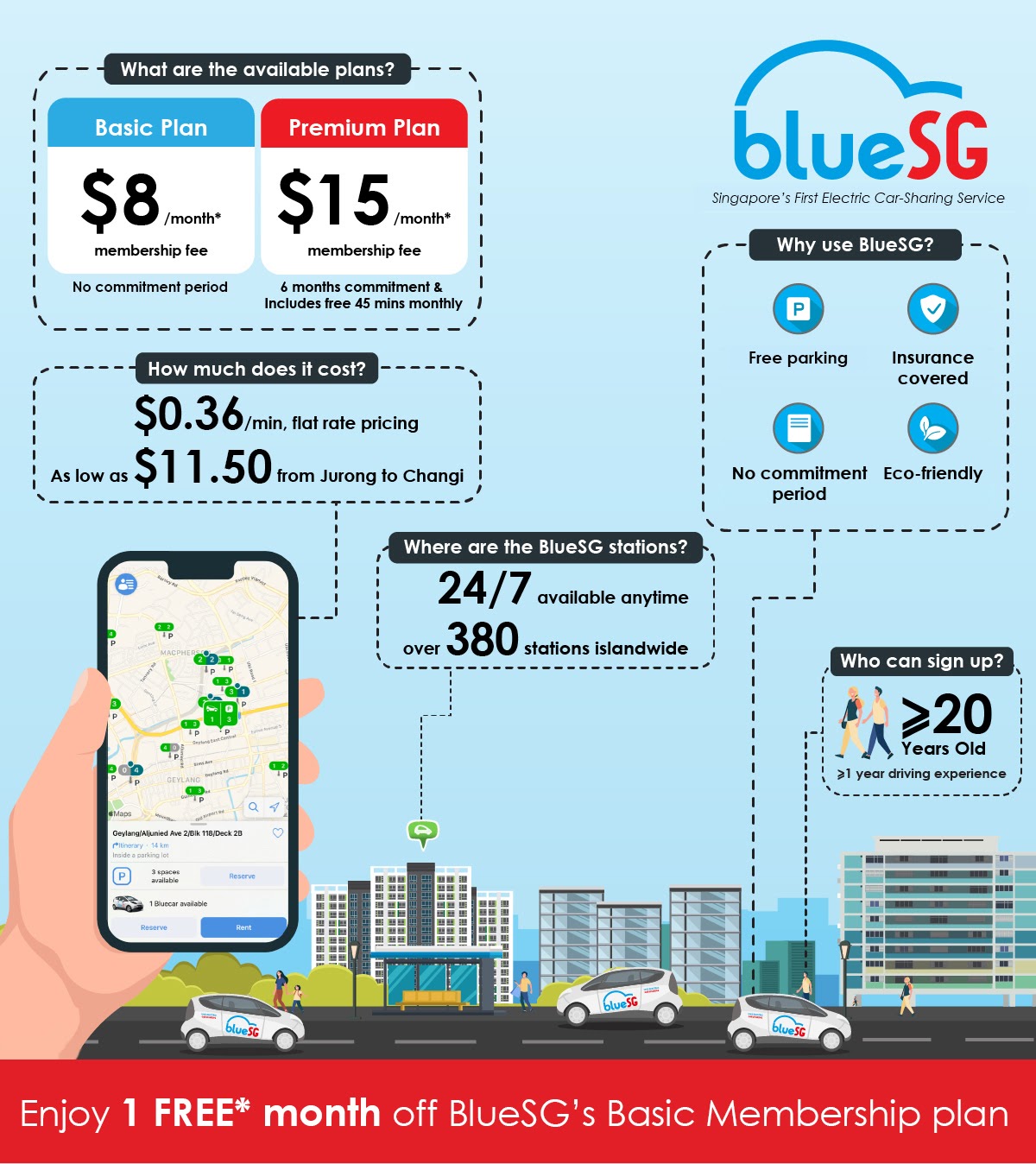
This article was sponsored by BlueSG, so that we can earn money to drive BlueSG.
*Terms and conditions apply.
If you like what you read, follow us on Facebook, Instagram, Twitter and Telegram to get the latest updates.
